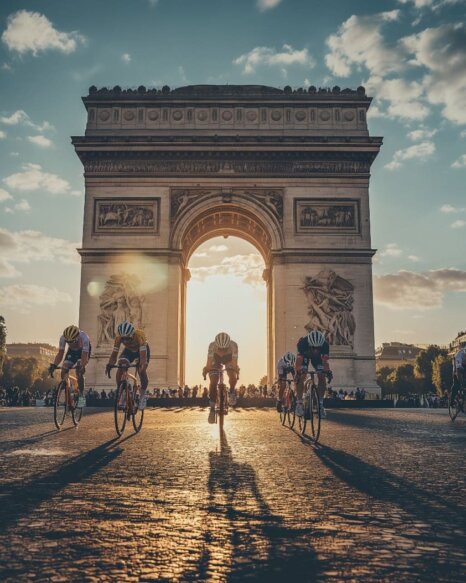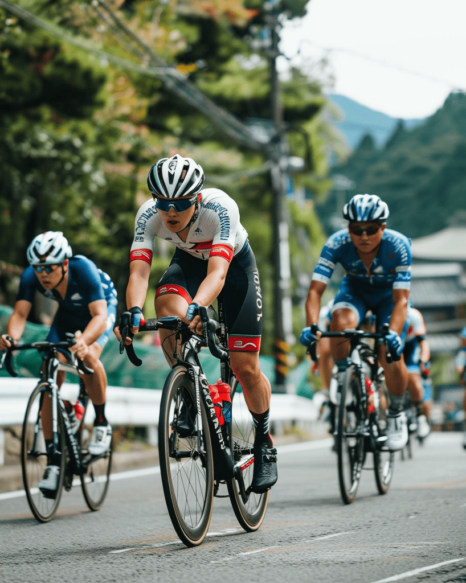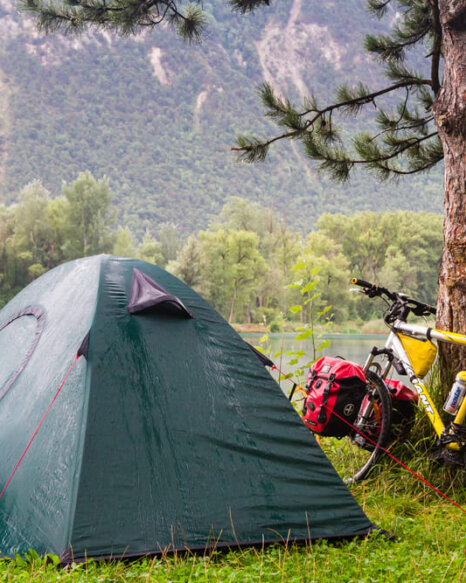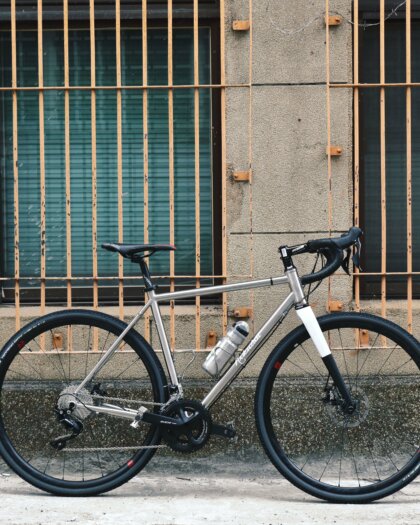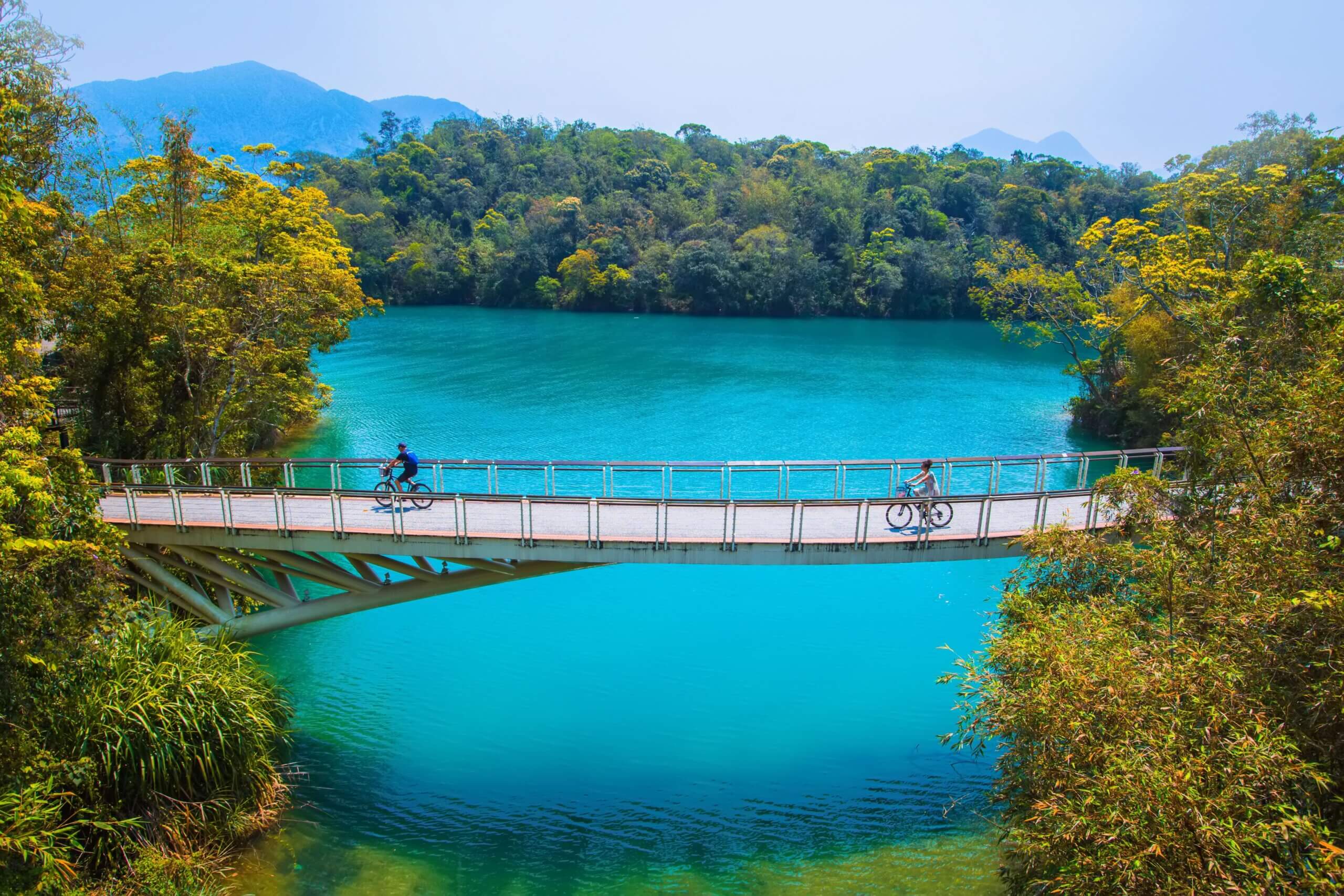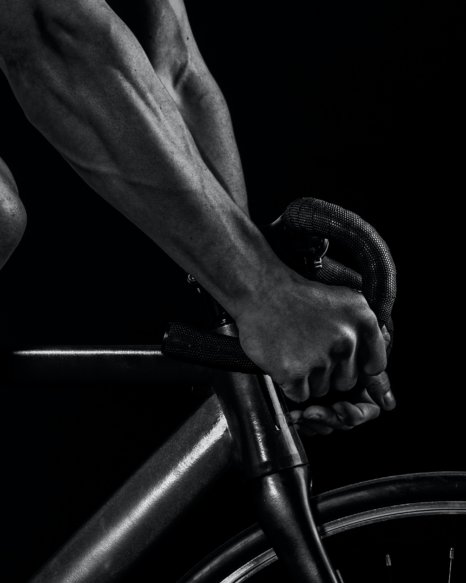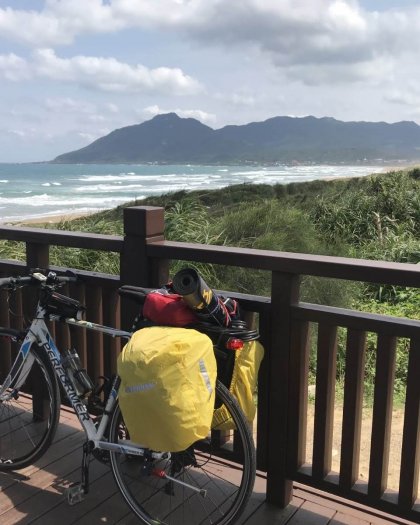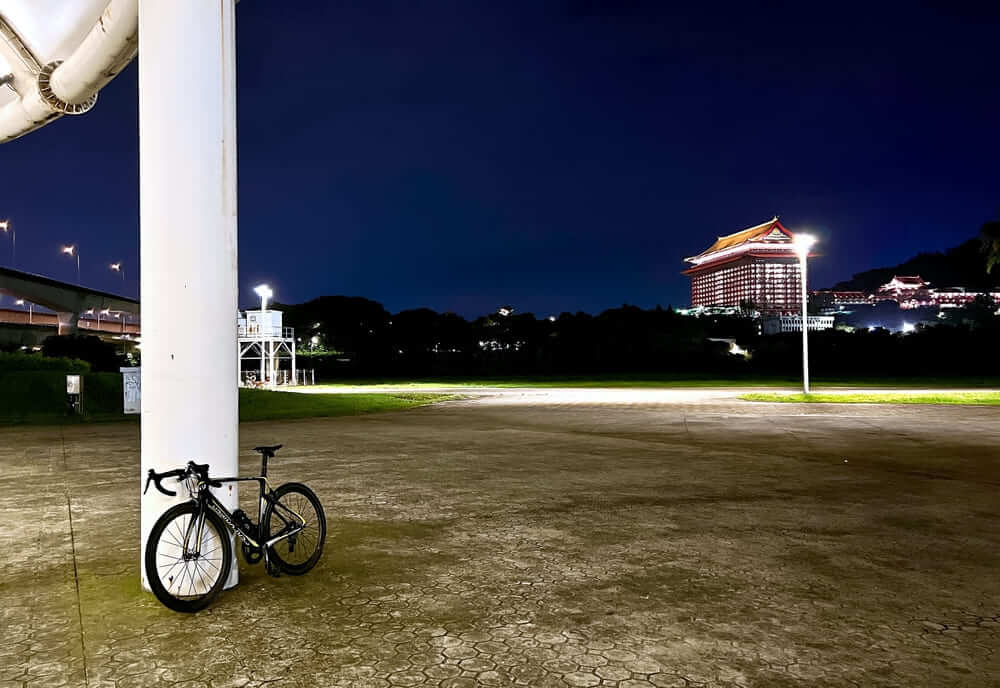
With the growing popularity of cycling, safety on the road has become a major concern. While most cyclists prefer to ride during daylight hours, some enjoy biking at night or after works, especially during summer months or when participating in multi-day cycling tours. (Read More: Cycling in Taiwan: Pre-Trip Guide)
Biking at night poses more risks than daytime cycling. Not only is it harder to see the road conditions, but it’s also more difficult for other vehicles and pedestrians to notice you, increasing the likelihood of accidents.
This article aims to help cyclists who are interested in biking at night by introducing equipment and measures that can be taken to avoid danger, ensuring adequate safety precautions are in place. This way, you can enjoy the fun of night cycling while protecting yourself and others on the road.
6 Essential Safety Tips for Biking at Night
Why Biking at Night Requires Extra Caution
The Unique Appeal of Biking at Night
After a busy day, biking at night, feeling the breeze against your face as you navigate quiet streets or winding riverside paths, offers a completely different urban experience compared to daytime.
The cool evening air soothes your skin, and without the hustle and bustle of traffic, night cycling, for me, is a way to clear my mind and relax.
Night Ride is also a visual feast. The city lights outline the contours of buildings, neon signs flicker, creating a moving tapestry of colors. Moonlight spills onto the ground, casting a silvery veil over everything, adding a touch of romance.
For many, biking at night is more than just exercise; it’s a unique way to explore the city, unwind, and connect with oneself.
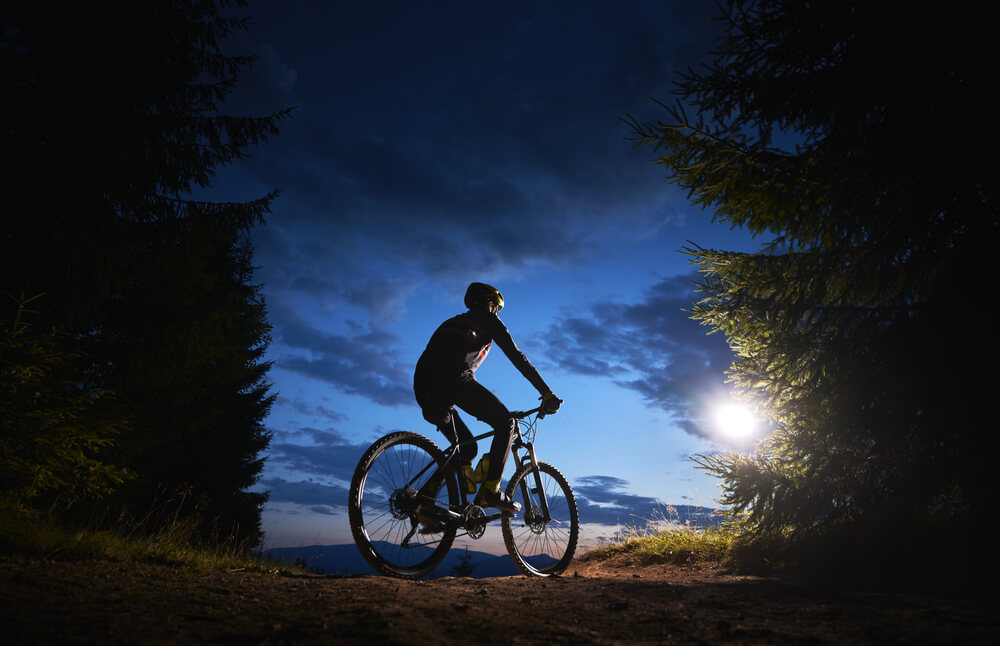
The Challenges of Nighttime Visibility
However, the allure of biking at night comes with inherent risks. Poor visibility and low light conditions can easily lead to accidents. Potholes and obstacles are harder to spot in the dark, and drivers’ vision may also be impaired.
Additionally, there are fewer cyclists on the road at night, making it more difficult to get immediate help in case of an accident. When riding on poorly lit roads, cyclists may also become targets for criminals.
Therefore, while enjoying the thrill of biking at night, it’s crucial to prioritize safety. Only with thorough preparation can you confidently navigate the darkness.
Limited Natural Light: The lack of natural light at night means cyclists must rely on artificial lighting to see the road clearly. The inability to clearly identify obstacles and uneven road surfaces can easily lead to accidents.
Visibility to Other Road Users: Cyclists are more difficult for drivers to see at night. This is especially dangerous for cyclists who lack reflective gear or lighting.
Weather Conditions: Weather conditions such as rain or fog can further reduce visibility and make cycling more difficult.
The Risks of Nighttime Traffic
Factors such as reduced visibility and low light conditions make biking at night significantly more challenging than daytime cycling. Cyclists are more likely to overlook potholes, obstacles, and are also more easily missed by other road users, greatly increasing the risk of accidents.
Speed and Driving Behavior: Cyclists should be aware that some roads may have higher speed limits at night, and drivers may have slower reaction times due to fatigue or poor visibility.
Risk of Drunk and Distracted Driving: Nighttime is a peak time for drunk and drowsy driving, increasing the risk of collisions with motor vehicles.
Traffic Volume and Road Conditions: Reduced traffic in some areas at night may lead drivers to become complacent and disregard road safety rules.
Biking at night requires more consideration and preparation than daytime cycling. Understanding and addressing these challenges is key to ensuring a safe night ride.
Benefits of Biking at Night
According to research, biking at night offers numerous benefits, including more comfortable weather conditions, a body state more conducive to exercise, a relaxed mood, and improved sleep quality.
More Comfortable Weather Conditions
Considering Taiwan’s distinct seasons, cycling under the scorching sun can undoubtedly leave you drenched in sweat and may not allow you to fully enjoy the pleasure of biking. Opting for biking at night,
Not only offers cooler temperatures compared to daytime but also effectively reduces the harmful effects of strong summer ultraviolet rays on your skin.
Read More: Best Time to Visit Taiwan: A Seasonal Travel Guide
A Body State More Conducive to Exercise
According to research, the most suitable time in the afternoon. At this time, the human body’s nerve sensitivity and acuity of smell, hearing, vision, etc. will be at a relatively high level, so you will definitely be able to exercise more efficiently. Good physical condition to cope with cycling activities at night.
A More Relaxed Mood
Engaging in relaxing activities after a tiring day undoubtedly makes one feel more comfortable. Participating in biking at night after a busy day allows us to adjust our physical and mental state. Besides chatting and interacting with friends, it also helps us to recharge and face the challenges of the next day with renewed energy.
Improved Sleep Quality
After a night of biking, your body is fully relaxed and has engaged in moderate exercise, leading to a deeper and more restful sleep. This improved sleep quality allows you to wake up the next day feeling refreshed and energized to tackle life’s challenges!
Pre-Ride Preparations and Safety Precautions for Biking at Night
Next, I’ll introduce the essential pre-ride preparations and safety precautions for biking at night, hoping to be helpful for those of you who love to cycle after dark!
Before embarking on a night ride, taking the time to prepare thoroughly can significantly enhance both your safety and the overall enjoyment of your cycling experience. Here are some pre-ride preparations to consider:
Night Ride Route Planning
Choosing the Right Route
- When planning a suitable route for biking at night, choosing familiar routes with ample street lighting can minimize unnecessary risks. Utilize GPS navigation and mobile apps to preview road conditions beforehand and opt for well-lit roads with clear traffic signs.
Avoiding High-Risk Areas
- At night, avoid cycling on roads with heavy traffic or unfamiliar, secluded areas. Check for local accident hotspots and choose safer alternative routes. Be especially cautious of remote or poorly lit areas with a higher risk of crime.
Informing Others About Your Trip
- Before heading out, inform your family or friends about your planned route and estimated time of return. This will enable them to provide timely assistance in case of an emergency.
Check the condition of the bike
For bike maintenance, I’ll introduce the bike check method, a quick and effective way to ensure your bike is safe and sound. The process involves checking the rear axle first, then moving up to the saddle, down to the crankset, up to the handlebars, and finally down to the front axle. It’s best to re-check the bike’s condition after each ride, ideally while washing and oiling it.
Brake System Checking
- Make sure the braking system is working properly, check the degree of wear and tear of the brake pads and make the necessary adjustments. The brake lever should be flexible and able to stop quickly when pressed.
Your tire pressure and wear checking
- Check your tire pressure regularly to make sure it’s within the recommended range to avoid punctures or affect riding stability during riding. Check the surface of the tire for wear and tear and replace it immediately if it is severely worn or damaged.
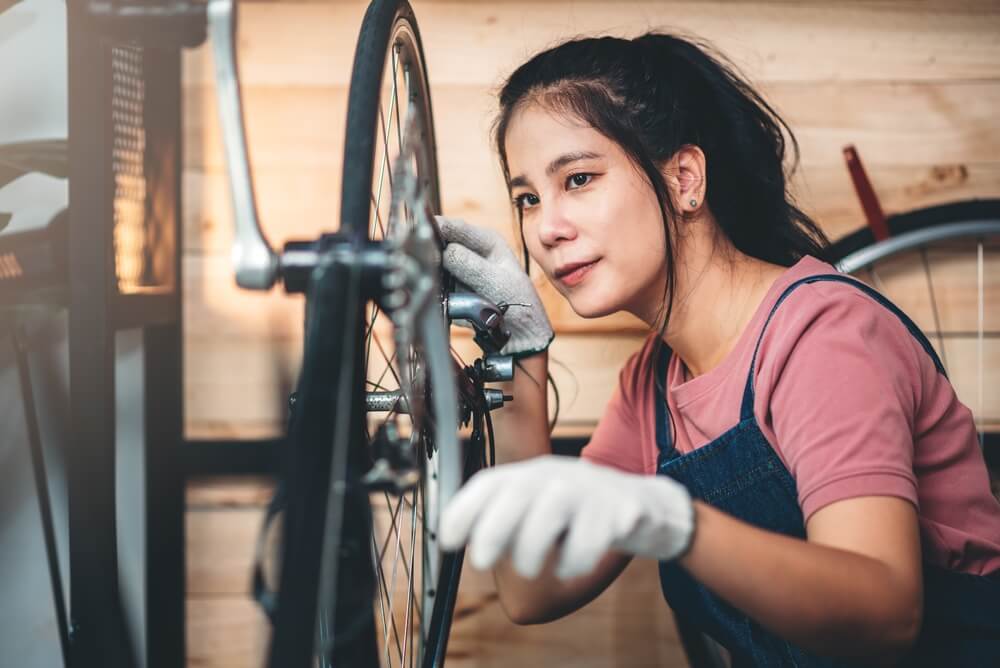
- Wheel Quick-release Checking: check whether the tire is punctured by nails or debris, and gently pinch the tire with your hand to confirm whether the tire pressure is sufficient, and then observe whether the brake pad part is worn to the safety line; These parts can become loose over time.
- Saddle: Apply pressure up, down, left, and right to ensure the saddle is secure. Under normal circumstances, there should be no sliding sensation. If there is movement, loosen the bolt, remove the seat post, clean any grease or dirt, and reapply grease or friction paste.
- Pedals: Check if the pedals are securely tightened. Insufficient torque can lead to pedal damage, and at high speeds, it could even cause a fall while cycling at night.
- Handlebars: Secure the front wheel between your feet, grip the handlebars, and twist them left and right to check if the stem bolts and other parts are properly tightened. Then, while holding the front brake, rock the bike back and forth to check the brakes and derailleurs.
- Final front-end check: Lift the front wheel and spin it freely, checking for any loose screws or other issues.
Regarding road conditions, I believe that manhole covers and gravel on the road edges can easily cause excessive tire wear. Therefore, it’s advisable not to ride too close to the edges. If your bike and clothing are sufficiently visible (we’ll discuss this later!), you can move slightly towards the center of the road, but always remain vigilant and aware of your surroundings to ensure a wider riding space.
Personal Preparation
Maintaining a Good Mental State
- Before biking at night, ensure you have had sufficient sleep and are in a good mental state to enhance your reaction time and judgment. Avoid cycling when feeling tired or emotionally unwell.
Carrying Essential Emergency Supplies
- Carry a mobile phone, spare battery, or power bank to stay connected and check your route. Bring a first aid kit and a small tool kit (including a spare tube, pump, and repair tools) for unexpected situations. Keep your ID and some cash on hand for emergencies.
Safety Precautions for Biking at Night
It’s best to ride with a group, as you’ll have companions to look out for each other in case of accidents. Our group, the “Lin Bei Cycling Group,” regularly organizes group rides every Tuesday. Feel free to join us for a challenging climb sometime!
Lastly, when biking at night, try to avoid unfamiliar routes or overly secluded areas. Regardless of gender, if you need to travel through areas with fewer people at night, it’s best to ride with a group and remember to carry self-defense tools.
Pepper spray is a good option, but I also recommend carrying a small, lightweight whistle. Blowing the whistle while using pepper spray can be even more effective in deterring potential threats, allowing you to respond to any unexpected situations.
Essential Gear for Biking at Night
While most cyclists prefer to pack light for a comfortable ride, certain essential gear is indispensable when biking at night, all for the sake of prioritizing safety (Further reading: Best Cycling Equipment List Top 3: What To Bring On Bike Tour?).
In the following section, I’ll introduce a range of gear that maximizes your visibility at night and helps you stay aware of other vehicles on the road. This way, you can achieve your goal of packing light while ensuring a safe and worry-free ride!

Lighting Equipment
Choosing a Headlight
- Brightness: Adequate brightness is crucial for illuminating the road ahead, and it’s recommended to choose a headlight with at least 500 lumens.
- Battery Life: Choose a headlight with sufficient battery life based on your riding time and distance to avoid running out of power mid-ride.
- Beam Pattern: A floodlight beam provides a wide area of illumination, while a spotlight beam illuminates a longer distance. 1 You can choose a suitable beam pattern based on your personal needs or opt for a headlight that offers both floodlight and spotlight functions.
Choosing a Taillight
- Flashing Mode: Flashing modes are more attention-grabbing than constant light, so it’s recommended to choose a taillight with multiple flashing options.
- Visibility Distance: The taillight should be visible from a distance, and it’s recommended to choose one with a visibility range of at least 500 meters.
Advantages of Helmet Lights
- Helmet lights can complement headlights by illuminating blind spots as you turn your head, which is particularly useful when checking road signs or obstacles on the sides. Adjustable beam angles and multiple brightness modes provide added flexibility.
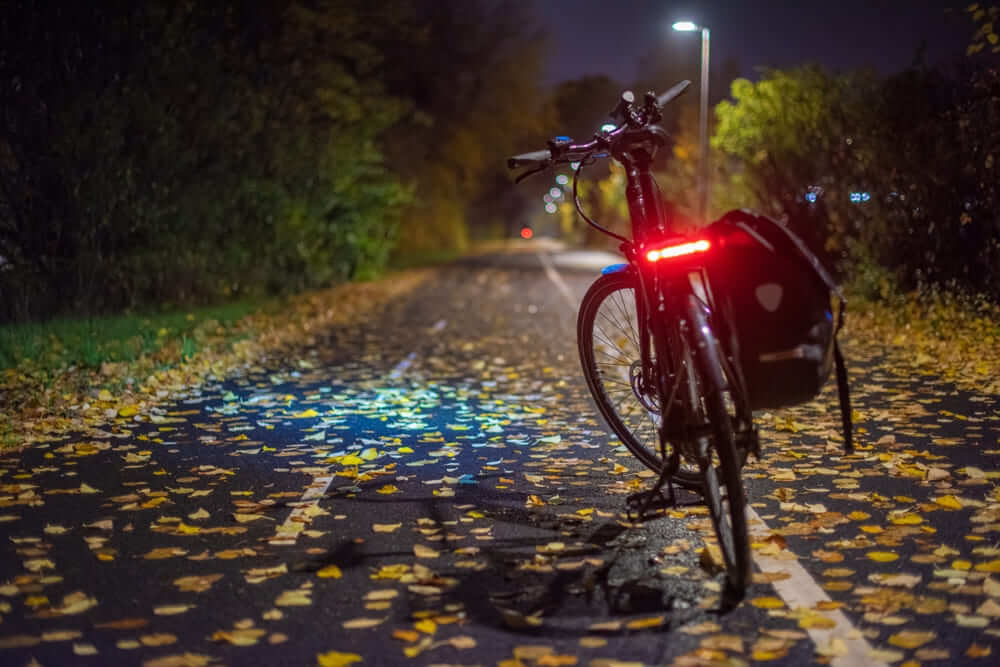
Reflective Gear
While front and rear lights are essential for biking at night, past accident statistics show that some collisions involve side impacts from motorcycles or cars.
To address the issue of bicycles not being easily visible from the side in low light conditions, I recommend cyclists apply reflective markings or stickers on the sides of their bikes. This can significantly increase visibility in poorly lit areas, allowing other road users to spot them earlier and slow down.
However, applying reflective stickers isn’t as simple as it seems; there’s a science to it! Firstly, since Taiwan drives on the left, reflective stickers and markings should be placed on the left side of the bike, and they should be positioned higher up.
The best spot is near the top and bottom tube junctions of the frame. Lastly, before applying reflective stickers, markings, or installing reflective strips, make sure to clean the frame thoroughly to enhance adhesion and ensure they stick firmly to the bike, safeguarding the safety of cyclists at night!
Reflective Clothing and Stickers
- Reflective Vests: Wearing a reflective vest significantly increases visibility at night. The reflective material bounces light from car headlights back towards the driver, making the cyclist much more noticeable in the dark.
- Reflective stickers: Enhance visibility by attaching them to your bike frame, helmet, and bags for safer night riding. Choose weather-resistant stickers to ensure effectiveness in rain or with prolonged use.
- Reflective Armbands and Leg Bands: Wearing reflective armbands and leg bands makes your limbs more visible at night, alerting other road users to your presence.
Wheel Reflectors
- Wheel reflectors (such as reflective tape or spoke reflectors) can create a striking visual effect as the wheels rotate, drawing the attention of other road users, especially at intersections or when turning.
Wearing Bright Cycling Clothing
When it comes to clothing, bright colors offer the best safety for cyclists! When biking at night, headlights shining on bright-colored clothing create a noticeable reflective or more vibrant effect, helping drivers easily identify cyclists ahead.
This not only makes you more noticeable but also effectively ensures your safety, which is why bright-colored cycling apparel is so crucial for night riding or in low-visibility conditions!
When choosing cycling apparel, it’s important to pay attention to the size and ensure a proper fit. Clothing that is too long may hinder your movement while riding, which could be counterproductive. On the other hand, clothing that is too short might not offer adequate protection.
Read More: 車衣推薦之文章
Wearing a Professional Helmet
The head is the most vital organ of the human body! Wearing a professional helmet while cycling protects your head. If possible, purchase a helmet equipped with safety warning lights, making you even more visible on the road and allowing oncoming vehicles to spot you from afar.
Proper Helmet Fitting
- Wearing a helmet correctly can effectively protect your head in an accident. The helmet should be worn level on your head, about 1-2 finger widths above your eyebrows, and the straps should be adjusted to fit snugly under the chin. The helmet should comply with local safety standards and certifications.
Choosing the Right Helmet
- The helmet should be lightweight, well-ventilated, and provide adequate cushioning for protection. Choose a helmet that fits properly to ensure both comfort and safety. Helmets with removable liners and anti-insect netting offer additional convenience and comfort.
Practical Safety Tips for Biking at Night
Biking at night requires specific skills to ensure your safety. Here are some practical safety tips to help cyclists navigate their bikes more securely in the dark. A stable bike light is crucial for your safety and that of other road users. A light that is bright enough but not blinding can effectively help you avoid accidents!
Maintain a Steady Pace
Avoid sudden acceleration or deceleration.
- Visibility is reduced at night, so maintaining a steady pace allows you ample time to observe your surroundings and react promptly. Sudden acceleration or deceleration reduces the predictability of your movements for other road users, increasing the risk of collisions. A consistent speed also helps you stop quickly when needed, reducing the likelihood of accidents.
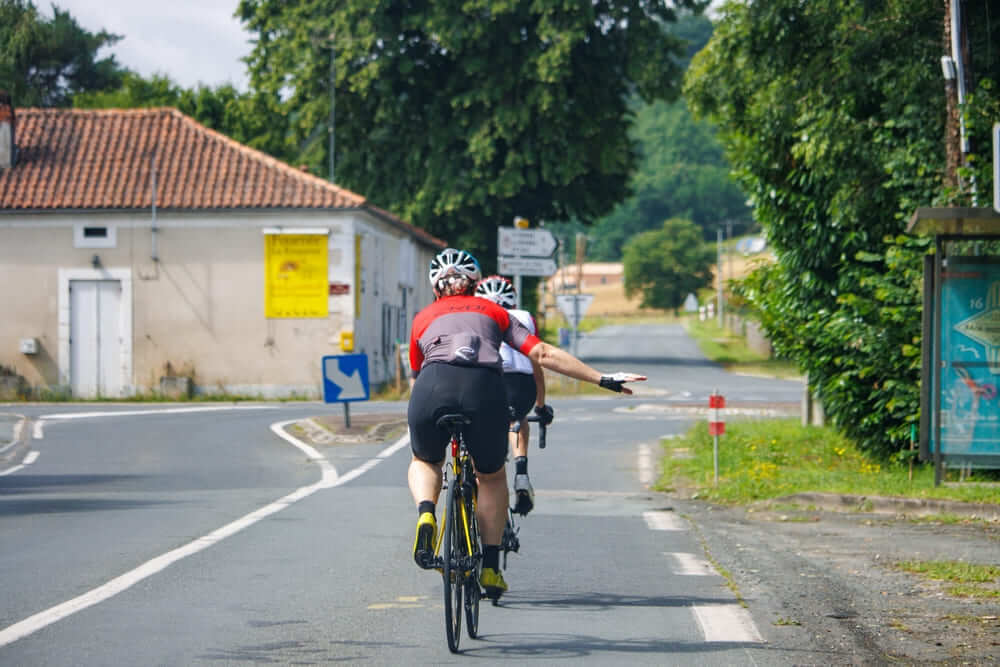
Use Hand Signals and Vocal Cues
Signal Your Intentions with Hand Signals
- When biking at night, using clear hand signals to indicate turns or lane changes can enhance other road users’ awareness of your intentions. Signals should be given well in advance, ensuring that other drivers have enough time to see and react to your movements.
Use Your Bell to Alert Others
- Use your bell or verbal cues to alert pedestrians and other cyclists of your approach, especially on narrow paths or when crossing streets. Giving timely warnings can effectively prevent accidents caused by startling others.
Stay Focused and Alert
Avoid Distractions
- While cycling, focus on the road and traffic conditions, and avoid distractions such as using headphones or listening to music. Keep both hands on the handlebars to ensure quick responses to unexpected situations.
Be Aware of Your Surroundings
- Constantly observe the surrounding traffic and road conditions, especially at intersections and turns. Be mindful of the movements of other vehicles and potential obstacles like pedestrians, animals, or damaged roads, allowing you to react in advance.
By following these safety tips, you can significantly reduce the risks associated with biking at night, enhancing both the safety and enjoyment of your ride. Staying alert and taking proactive safety measures are key to ensuring every night cycling adventure is both enjoyable and worry-free.
Final Reminders Before Biking at Night
As more and more people embrace cycling, the safety of biking at night has become a growing concern. This article offers comprehensive safety tips and gear recommendations for night cycling from various perspectives, aiming to ensure that cyclists can maximize their safety while enjoying the thrill of riding after dark.
To ensure safety while riding at night, preparation is crucial. Checking the condition of the vehicle and confirming the road conditions are required before every ride.
Use the inspection method to quickly inspect components such as wheels, seat cushions, pedals, and handlebars to ensure that everything is in good condition. When riding, avoid getting too close to the roadside and choose a more familiar route to reduce the risk of accidents.
In terms of gear, a professional helmet and bright-colored cycling clothing are essential. Front and rear lights, along with reflective stickers on the sides, can enhance visibility at night and ensure cycling safety.
Music enthusiasts can opt to bring a Bluetooth speaker and play music at a moderate volume while biking at night to increase their presence (prioritizing a volume that doesn’t disturb other road users).
Finally, safety precautions for biking at night should not be overlooked. Avoid riding alone in remote areas; cycling with a group is the best option.
Carrying self-defense tools like pepper spray and a whistle can be effective for self-protection in emergencies.
In conclusion, biking at night offers unique pleasures but also comes with certain risks. By choosing appropriate gear, making thorough pre-ride preparations, and following all safety precautions, cyclists can enjoy a safe and enjoyable night riding experience.
